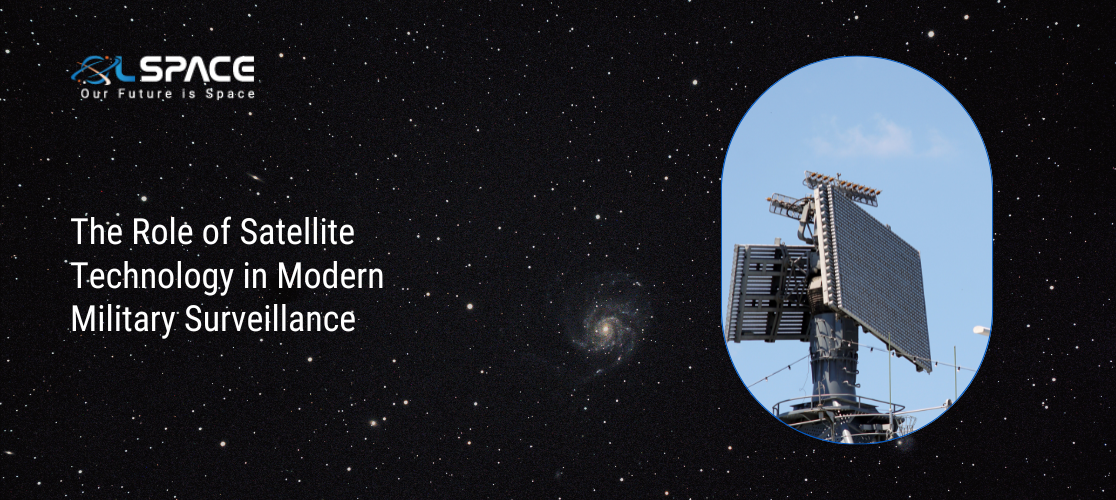25 June 2024
The Role of Satellite Technology in Modern Military Surveillance

In an era where information superiority can determine the outcome of conflicts, satellite technology has become a cornerstone of modern military surveillance. By providing real-time, high-resolution imagery and geospatial data, satellites enhance the ability of military forces to gather intelligence, monitor activities, and ensure national security. This article delves into the transformative impact of satellite technology on military surveillance, highlighting its applications, benefits, and future prospects.
1. The Evolution of Satellite Technology in Military Surveillance
Satellite technology has undergone significant advancements since its inception, evolving from basic reconnaissance missions to sophisticated systems capable of detailed, real-time surveillance. Early military satellites were primarily used for communications and rudimentary imaging. Today, they incorporate advanced sensors, high-definition cameras, and artificial intelligence (AI) to deliver precise and actionable intelligence.
2. Key Applications of Satellite Technology in Military Surveillance
Intelligence Gathering
Satellites provide critical intelligence by capturing images and data from various parts of the world, often inaccessible by other means. This includes monitoring enemy movements, tracking the deployment of military assets, and assessing infrastructure developments.
Geospatial Intelligence (GEOINT)
Geospatial intelligence involves the analysis of satellite imagery to understand the physical features and human activities on the Earth’s surface. GEOINT is crucial for planning military operations, disaster response, and strategic decision-making.
Real-Time Monitoring and Reconnaissance
Modern satellites offer real-time surveillance capabilities, enabling continuous monitoring of areas of interest. This real-time data is essential for reconnaissance missions, providing timely information that can influence tactical decisions.
Early Warning Systems
Satellites play a vital role in early warning systems by detecting missile launches, nuclear tests, and other potential threats. This early detection allows for prompt responses to mitigate risks and protect national security.
3. Benefits of Satellite Technology in Military Surveillance
Global Coverage: Satellites provide extensive coverage, allowing military forces to monitor vast regions without geographical limitations.
High-Resolution Imagery: Advanced imaging technology enables the capture of detailed pictures, aiding in accurate analysis and intelligence reporting.
Stealth and Safety: Operating in space, satellites are less vulnerable to interception and destruction compared to terrestrial surveillance systems.
Enhanced Data Integration: Satellites can integrate data from various sources, offering comprehensive situational awareness and facilitating coordinated operations.
4. Future Prospects of Satellite Technology in Military Surveillance
The future of satellite technology in military surveillance looks promising, with continuous advancements poised to enhance capabilities further. Key trends include:
Artificial Intelligence and Machine Learning: Integrating AI and machine learning with satellite data will enable faster and more accurate analysis, predictive modeling, and autonomous decision-making.
Miniaturisation and Cost Reduction: Smaller, more cost-effective satellites, often referred to as nanosatellites or CubeSats, will allow for more extensive and flexible satellite constellations.
Enhanced Sensor Technologies: Development of advanced sensors, including hyperspectral and thermal imaging, will improve the quality and variety of data collected.
Cybersecurity Enhancements: Strengthening cybersecurity measures will protect satellite systems from potential threats and ensure the integrity of the data they collect.
Conclusion
Satellite technology is a pivotal element in modern military surveillance, providing unparalleled advantages in intelligence gathering, real-time monitoring, and national security. As technology continues to evolve, the role of satellites will only become more critical, driving innovation and enhancing the effectiveness of military operations worldwide.
By staying at the forefront of satellite technology, military forces can maintain a strategic edge, ensuring readiness and resilience in an increasingly complex global landscape.
